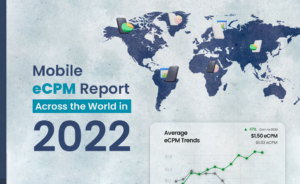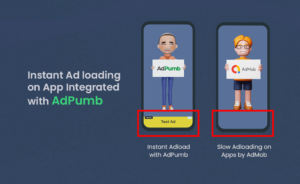How to Increase the Fill Rate of an Ad [2023 Guide]

It is excellent that the mobile ad industry is at dawn, getting started with a lot of potentials and coming to its title. Mobile ads will generate revenue for publishers since they are effective when utilized with the proper placements.
Nowadays, publishers are struggling to improve and optimize eCPMs and increase ad fill rates they get from the ads presented to their app users. They are in a dilemma because of this situation, since stagnant sales affect the whole business model. A recent analysis conducted by Forrester found that the amount they spent on in-app mobile ads is rising, taking a quarter of total digital media budgets. How does this increase affect app publishers?
In the preceding 12 months, ad revenues were down or continued with no improvement for more than half of the publishers. It is crucial since over 50% of apps monetize through advertising. So, we have to think about a solution to increase mobile ad revenue from ad networks and demand sources. All available ad placements should be filled, and every ad unit must contribute to the profitability of your app.
Here, we compiled five crucial points that will help you increase your ad fill rates.
1. In-App Header Bidding Solution
In-app header bidding solutions are set up and operate by setting up real-time competition between different demand sources as soon as a prospective advertising opportunity is presented. After that, the auction winner can either have their ad served or add their winning bid to the waterfall. So, in-app header bidding enhances revenue and eCPMs and increases ad fill rate by raising pre-bid competition.
Using unified auctions in combination with in-app header bidding has already benefited several app publishers. Compared to the peers of some apps that are running unified auctions, they witnessed a noticeable rise in CPMs, ad revenue, and ad load times. It is time to move to header bidding if your app currently runs programmatic advertising.
2. Experiment with a Variety of Ad Placements
There are several types of ad placements. Both how people perceive an ad and the price an advertiser pays are influenced by ad format, frequency, and timing. Do you know? Banner ads are simple to fill out because they are the most widely used ad type for mobile apps. Still, they don’t always have a 100% fill rate but show a low CTR.
Apart from formats, time of day, connection type, and ad frequency (i.e., the number of ads someone has already viewed, particularly within the same app context) all have a noticeable impact on fill rates for ad impressions.
Being diversified is beneficial! So, ensure that you cover all bases by including a wide range of ad types and potential ad placements.
3. Understand How In-App Ad Inventory Differs from Online Ads
Unfortunately, many marketers nowadays combine mobile in-app and mobile web advertising. They may be on the same device but not on the same thing!
In-app mobile advertising offers numerous advantages over mobile web environments, including improved geotargeting, the absence of ad blockers, and many more. Furthermore, in-app settings are safer and less vulnerable to fraud than mobile web. App developers and publishers can benefit from this distinction.
4. Know Your Audience
The people of your user base are all unique. Apps may optimize their monetization strategies when they are aware of the variations in their audience.
If we consider geography, we will see the differences in the audience. The average cost per click (CPC) in Sweden is above $0.50, but in Bulgaria, it is just about $0.03. What did you get from this? Of course, advertisers are ready to pay more to reach the audience in Sweden than in Bulgaria. Even brands may be okay to pay more to reach the users, especially in places like the US. Publishers can enhance demand for their inventory by providing this information to advertisers as it becomes available.
In this case, location is not the sole deciding factor. An advertiser’s perception of a person depends on several criteria, including their job, propensity to spend on apps, past purchasing habits, and whether or not they wish to put an ad in front of them. These can be strategically used by app publishers.
5. Set Your Aim Around Higher Fill Rates and eCPM
Having a realistic and pragmatic perspective is the best move app publishers can make with mobile in-app advertising. No app will ever have exponentially high top-ad fill rates or monthly ad revenue growth. However, app developers and publishers can achieve their goals by taking essential steps and setting relevant and realistic goals.
Have you seen any mobile ad roadmap that explains how this year will increase ad revenue? Do you have any idea of the size of the opportunity? What is your plan for choosing an app monetization strategy? What plans do you have to work?
The first step to beginning a process that can revolutionize your business, like ad monetization, is understanding where you are. It may seem like a short-term headache, but it will end in happiness with goals achieved. You can realize how much work it will take to get where you want to go if you can honestly say, “I am here to do it.”
We Are Here to Increase your Ad Revenue! Choose AdPumb
AdPumb promises effective app monetization with in-app advertising. We get you access to global demand, offering 99.99% fill rates and the best price per impression. We are committed to connecting publishers with top ad networks, exposing your inventory to more bidders, increasing the eCPM, and maximizing the ROI. Your mobile ad revenue is ready to show an instant rise with our guaranteed ad revenue optimization services. We supply ad demand from over 3000 domains worldwide. AdPumb also sets a unified dashboard for consolidated reports from 50+ demand reports. Let us help you optimize! Visit AdPumb to get a free ad estimation now!





